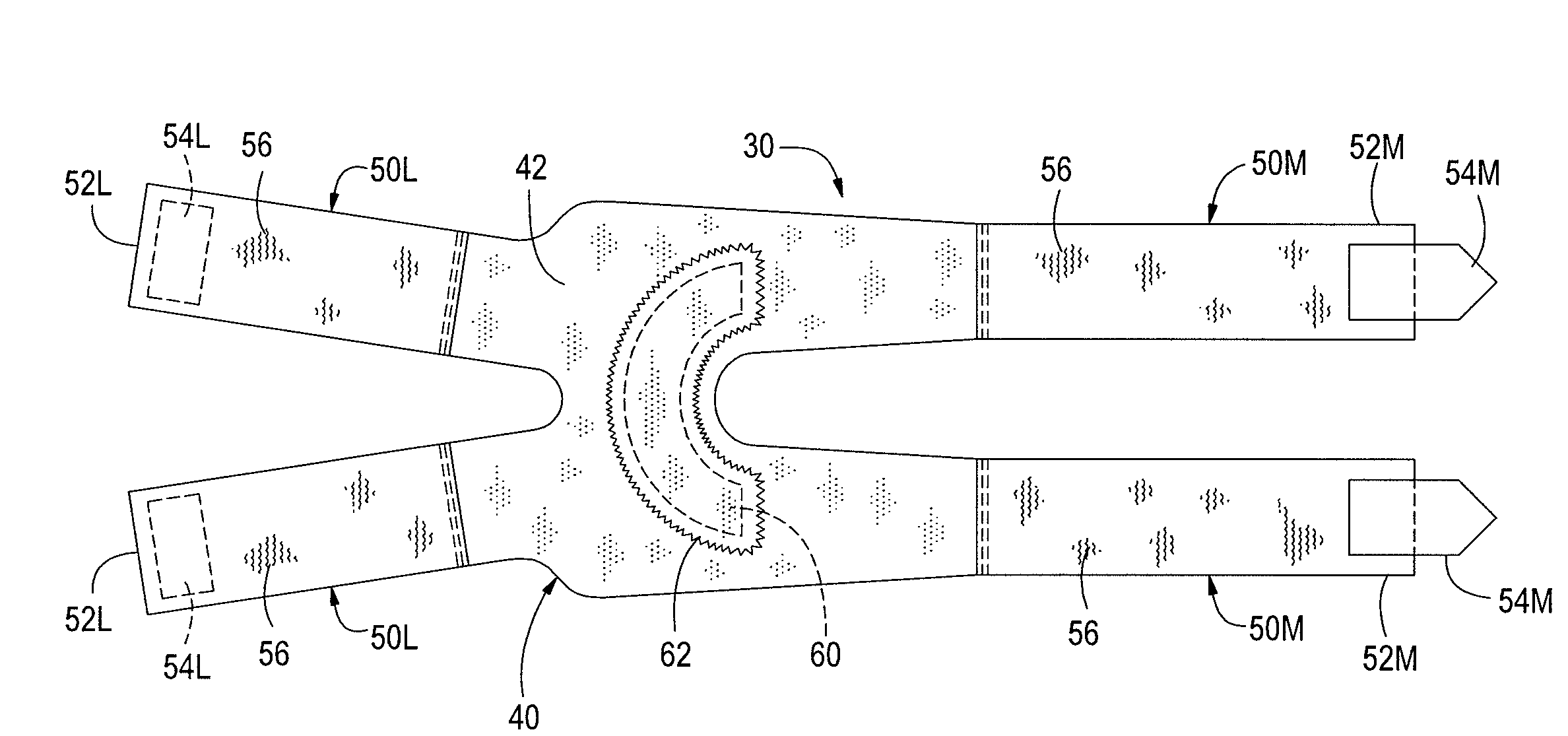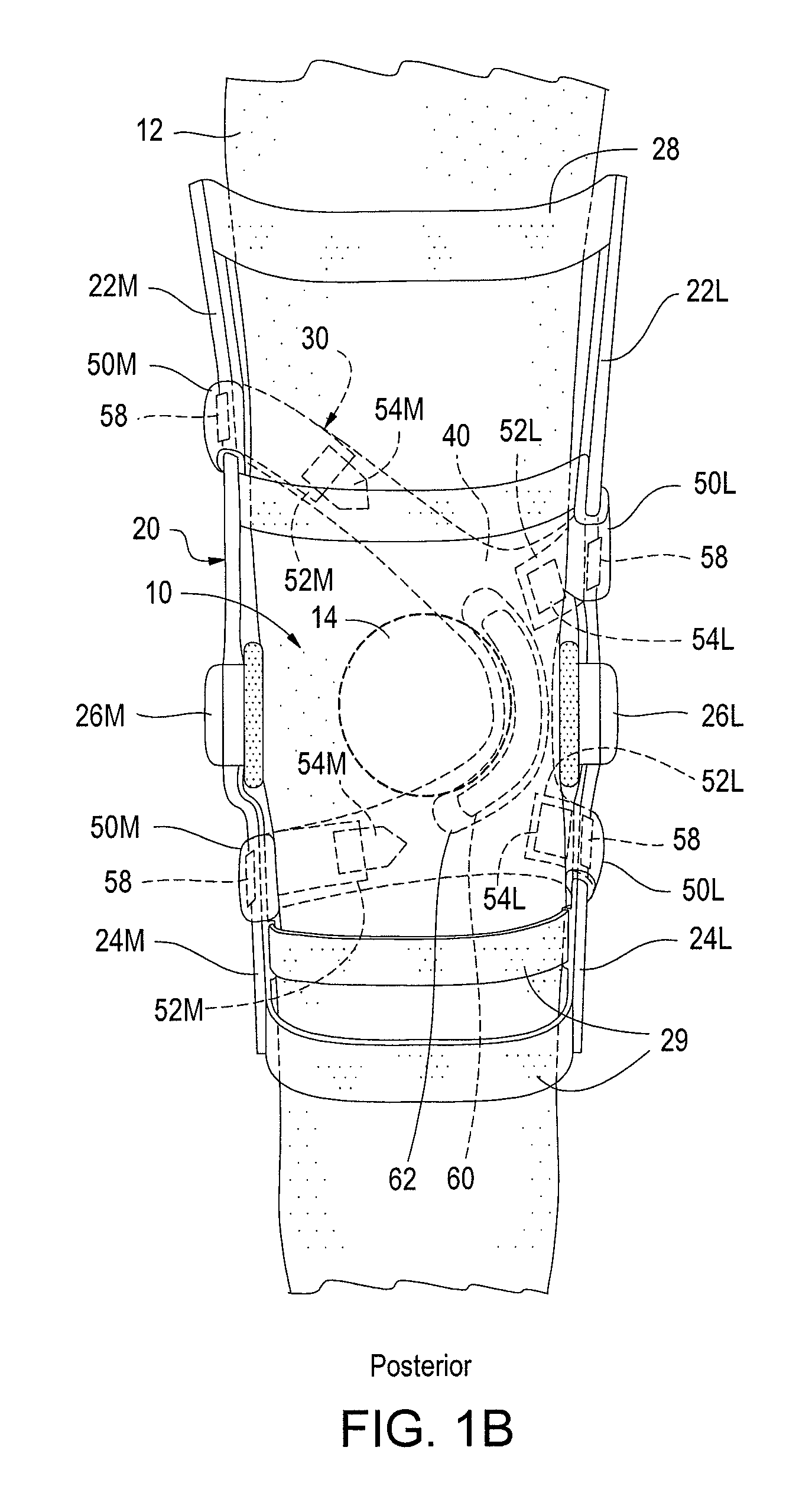Tension Strap for Migration Prevention and Patellar Stabilization for Use With Knee Braces
a technology of knee braces and tension straps, which is applied in the field of tension straps for use with knee braces, can solve the problems of ineffective braces, poor purchase (or fit) of functional braces off-the-shelf, and inability to control the medial patella femoral ligament (mpfl) that is not currently available, so as to prevent the vertical migration of knee braces and eliminate interruptions in physical activity. , the effect of increasing the efficiency of us
- Summary
- Abstract
- Description
- Claims
- Application Information
AI Technical Summary
Benefits of technology
Problems solved by technology
Method used
Image
Examples
Embodiment Construction
[0019]Referring more particularly to the drawings, FIGS. 1 (a &b) and 6 (a &b) show the tension strap 30 used in combination with a knee brace 20 worn on the leg 12 of a user. The knee brace 20 typically includes one or more proximal cuffs 28 engageable with the wearer's leg 12 above the knee 10 and one or more distal cuffs 29 engageable with the wearer's leg 12 below the knee 10. The knee brace 20 typically has a pair of hinge assemblies (26L and 26M) disposed medially (M) and laterally (L) about the joint of the knee 10. The proximal cuffs 28 of the knee brace 20 are typically connected to the pair of hinge assemblies (26L and 26M) by a pair of upper arms (22L and 22M) generally disposed medially and laterally about the knee 10 and leg 12. The distal cuffs 29 of the knee brace 20 are also typically connected to the pair of hinge assemblies (26L and 26M) by a pair of lower arms (24L and 24M) also generally disposed medially and laterally about the knee 10 and leg 12.
[0020]As will b...
PUM
 Login to View More
Login to View More Abstract
Description
Claims
Application Information
 Login to View More
Login to View More - R&D
- Intellectual Property
- Life Sciences
- Materials
- Tech Scout
- Unparalleled Data Quality
- Higher Quality Content
- 60% Fewer Hallucinations
Browse by: Latest US Patents, China's latest patents, Technical Efficacy Thesaurus, Application Domain, Technology Topic, Popular Technical Reports.
© 2025 PatSnap. All rights reserved.Legal|Privacy policy|Modern Slavery Act Transparency Statement|Sitemap|About US| Contact US: help@patsnap.com



